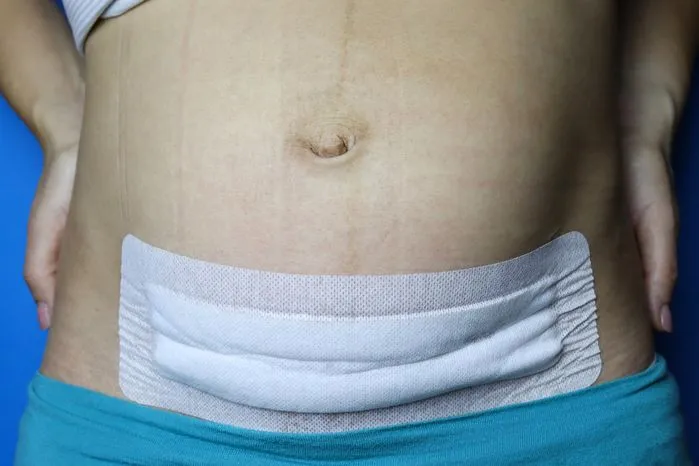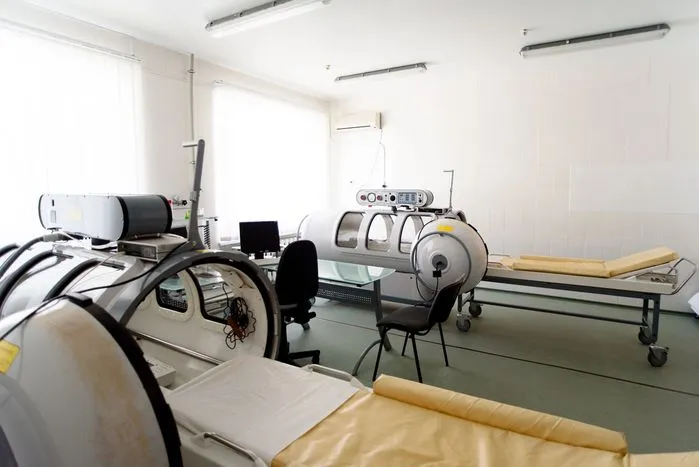Think of abdominal pads, also known as ABD pads, along with ABD sterile medical dressings, as the heroes in wound care. These dressings swoop in to handle larger, more severe wounds that ordinary dressings fail to manage. Their design allows them to soak up a large amount of discharge, safeguard wounds, and reduce infection risk.
You'll find these dressings in various sizes, suitable for wounds of different dimensions, and they often come as sterile or non-sterile, depending on cleanliness requirements. Sure, they might seem like just highly absorbent squares, but their contribution to wound management makes them a favorite choice among healthcare professionals.
Key Takeaways
- Functioning as absorbers of wound discharge, abdominal or ABD pads provide cushioning to affected regions, particularly in extensive wounds on the abdomen.
- For wounds that exude heavily, ABD sterile dressings are ideal due to their high absorbency, with sterility significantly reducing infection risks.
- Comprising non-adherent layers, these dressings also include an absorbent core, surrounded by a waterproof outer layer.
- Proper application necessitates wound cleaning, and precise placement of dressing to completely cover the wound, secured with medical tape or bandages.
- Crucial for effective wound management, ABD dressings maintain optimal healing conditions by preserving a moist environment, while simultaneously lowering infection risks.
Understanding Abdominal Pads
Abdominal pads, known as ABD pads, are relied upon by countless healthcare professionals. These vital medical items typically serve to absorb wound discharge, cushion the affected area, and guard against further harm.
In the medical supply market, numerous types of ABD pads exist, each designed to cater to specific wound care needs. Some pads are for wounds with heavy exudate, whereas others are suitable for lighter, less serious injuries. Sterile and non-sterile forms are available, the choice of which depends on the cleanliness level required in wound care.
Dimensional differences in ABD pads cater to wounds of varying sizes. Minor injuries require smaller pads, while major, more severe wounds necessitate larger pads. Choosing the appropriate size is crucial; it directly affects how well the pad absorbs and protects.
"Abdominal pads and ABD sterile dressings: the unsung heroes of wound care. Designed to manage heavy exudate, protect wounds, and minimize infection risks, these versatile dressings ensure optimal healing conditions for even the most challenging injuries."
ABD Sterile Dressings
ABD sterile dressings significantly help in wound healing and preventing infections. Specifically designed for wounds that exude heavily, these dressings provide high absorbency. Sterility in ABD dressings helps minimize infection risks, thereby accelerating wound healing.
1. Non-adherent layers, absorbent cores, and waterproof outer layers are typical components of ABD sterile dressings.
2. Different wound types and locations are treatable with these dressings, thanks to their variety in sizes.
3. Certain dressings even feature adhesive borders, offering comprehensive wound management solutions.
Painless removal is among the features of ABD dressings' non-adherent layer, while exudate gets soaked up by the absorbent core, preventing accumulation in the wound. External contamination is preventable by the outer layer, facilitating a clean wound environment. With these attributes, ABD dressings not only speed up wound healing but also improve patient comfort, making them essential in any wound care protocol.
Uses for Abdominal Pads
Abdominal pads, or ABD pads, hold indispensable value in wound care, appreciated for their versatility and effectiveness. Large wounds, particularly located in the abdominal area, are their primary application due to high absorbency. Efficient management of wound exudate helps provide a clean, healing-friendly environment.
Different types of ABD pads cater to specific wound conditions. Some include antimicrobial agents to thwart infection, while others feature non-adherence for sensitive skin protection. Techniques for applying these pads depend on wound type, location, and patient health. Medical tapes or bandages secure them, ensuring wound coverage and protection from external contamination. Acting as secondary dressings, they offer an additional protective layer over primary dressings.
Emergencies see the use of these pads for severe bleeding management, attributed to their superior absorbency and large size. During surgeries, health professionals rely on them to soak up blood and other body fluids, maintaining a clean, visible operating area. Despite their name, abdominal pads find application beyond abdominal wounds, suitable wherever large, highly absorbent dressings are necessary.
Applying ABD Sterile Medical Dressings
Wound management necessitates correctly applying ABD sterile medical dressings. Follow precise steps using specialized techniques to guarantee safety and effectiveness. Selection of the suitable dressing, including its type and size, is equally important for fitting the wound appropriately.
Steps begin with cleaning both the wound and surrounding skin to ward off infections. Next, position the ABD dressing to cover the entire wound. Securing the dressing forms the final step, which usually involves medical tape or bandages, depending on the wound's size and position.
Various sizes and types of ABD dressings are available, making selection crucial. Factors such as wound size, exudate amount, and patient comfort should guide this decision. Adherence to these steps enables healthcare professionals to apply ABD dressings accurately, promoting optimal wound healing.
Importance in Effective Wound Management
Applying ABD sterile medical dressings effectively manages wounds. Such dressings are vital for preserving a moist environment, fast-tracking the healing process, and lowering infection risks.
Preventing infection is another vital wound management aspect. ABD dressings, due to their high absorbency and sterility, excel in this area. These dressings absorb exudate, hindering bacterial and other pathogenic accumulations that often lead to infection. Their sterile characteristic ensures zero introduction of additional microbes into wounds during dressing changes, further diminishing infection chances.
For optimal wound healing, a balanced environment is necessary. ABD dressings contribute significantly to this balance by maintaining wound moisture, preventing dryness, and fostering ideal healing conditions. Managing large, deep wounds, where regular dressings are inadequate, becomes particularly important with these dressings.
Supporting Facts and Statistics
According to the Centers for Disease Control and Prevention (CDC), cited that ABD pads are essential for proper wound care. This sterile material helps prevent healthcare-associated infections (HAIs).
CDC emphasized that Surgical Site Infections (SSIs) are a common type of HAI, with significant implications for patient recovery. Also, the agency insists on the importance of appropriate wound dressings in preventing SSIs.
Meanwhile, CDC declared that in 2005, there were an estimated 41.9 million injury-related visits to emergency departments in the United States. Abdominal pain was the leading illness-related diagnosis at these visits, underscoring the importance of effective wound management strategies, including the use of appropriate dressings.
The Wound Pros’ Opinion on Abdominal Pads and ABD Sterile Medical Dressings for Wound Care
In wound management, abdominal pads along with ABD sterile medical dressings are crucial. These items absorb well and protect wounds, fostering a conducive environment for healing. At The WoundPros.com, we believe that their effectiveness is highly dependent on proper application. We support that it is an intricate process requiring careful handling and comprehensive understanding. Hence, these tools remain invaluable in hastening recovery and preserving optimal health.
Frequently Asked Questions
What is an abdominal pad used for?
An abdominal pad, also known as an ABD pad, is primarily used in medical scenarios to absorb fluid from wounds, especially in the abdominal area. It helps in maintaining a dry environment around the wound to facilitate healing and prevent infection.
How do you dress an abdominal wound?
Dressing an abdominal wound involves several steps. First, clean the wound with mild soap and water. Next, apply an antibiotic ointment to prevent infection. Then, cover the wound with a sterile abdominal pad. Secure the pad with medical tape or a bandage to keep it in place.
How to put an abdominal pad?
To put on an abdominal pad, first, clean and dry the area around the wound. Then, place the pad directly on the wound and secure it with a bandage or medical tape. Make sure the pad covers the entire wound to ensure proper healing and prevention of infection.
Can I use a pad as a bandage?
Yes, a pad can be used as a bandage in some situations. It can serve to protect wounds, absorb fluid, and maintain a clean environment around the wound. However, it's crucial to ensure the pad is sterile to prevent infection.
What are wound pads used for?
Wound pads are used to protect and cover wounds, absorb exudate, and create an optimal healing environment. They come in various types, including foam, hydrocolloid, and alginate pads, each with specific uses depending on the wound type.
How do you use a surgical pad?
To use a surgical pad, first clean the wound and the area around it. Apply an appropriate ointment if needed, then place the surgical pad directly over the wound. Secure it with medical tape or a bandage to keep it in place.
What is the use of an abdominal pack?
An abdominal pack is used in surgeries involving the abdominal cavity. It helps to control bleeding, protect organs, and absorb fluids during the operation.
What are the pads used in surgery?
Surgical pads, also known as sponges, are used in surgery to absorb blood and other fluids. They aid in maintaining a clear operating field and minimizing the risk of post-surgical complications.
What is an abdominal wrap?
An abdominal wrap, sometimes called an abdominal binder, is a bandage worn around the abdomen. It provides support and compression to the abdominal muscles, which can be beneficial after surgery or childbirth.
What is a pad used for?
A pad has many uses. In a medical context, it's typically used to absorb fluids from wounds, provide cushioning, and protect the wound from further damage. In personal hygiene, pads are used to absorb menstrual blood.
What is foam dressing used for?
Foam dressing is used for wound care. It's highly absorbent and ideal for wounds with heavy exudate. The foam creates a moist environment that supports the body's healing process while protecting the wound from bacterial contamination.
What is occlusive dressing in medical terms?
In medical terms, an occlusive dressing is a type of bandage that is air- and water-tight. It is used to seal off wounds from air and moisture, which helps to speed up healing and prevents infection.




.webp)

.avif)